"History depends on who writes it and who survives it. It is shaped by those who promote it and those who
contribute to it. The official history of American biofeedback started in 1969 at the Surf Rider Inn in Santa
Monica, California. Barbara Brown, a Veterans Administration (VA) electroencephalography (EEG) researcher,
organized this meeting and placed her feisty stamp on the field. Here, the separate threads of scientific
research into the possibility of autoregulation and the autoregulation practices of millennia-old meditative
techniques coalesced." (Peper & Shaffer, 2010, p. 142)
Jay Gunkelman has been an indispensable educator, leader, and mentor. He has generously taught generations of teachers and researchers about neurofeedback and qEEG. The field is more inclusive and vibrant because of Jay's tireless advocacy, especially on behalf of students and our international colleagues.
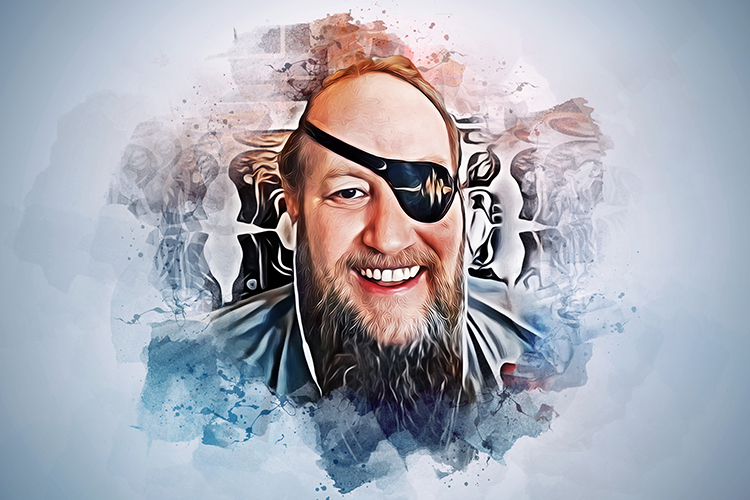
BCIA Blueprint Coverage
This unit addresses the
I. Orientation to Neurofeedback - B. History and development of
neurofeedback.
This unit covers Early Antecedents, Cybernetic Theory, Operant Conditioning, The Evolution of EEG Rearch and Practice, Contributors To EEG Research, and Neurofeedback Research.
Please click on the podcast icon below to hear a full-length lecture.

Early Antecedents
The concept of self-regulation (voluntary control of biological processes) is ancient, despite our recent
rediscovery of them. Hindus practiced systems of yoga more than 3,000 years ago in India. Before the term
biofeedback
was popularized in 1969, contributors repeatedly demonstrated this learning process without understanding its
implications and broader application.
Claude Bernard (1865) proposed that the body strives to maintain a steady state
(milieu interieur).
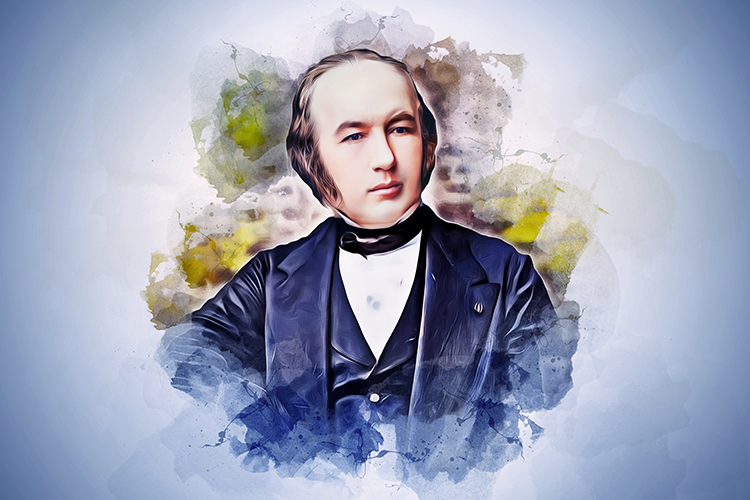 Walter Cannon
Walter Cannon (1914) expanded on this concept when
discussing
stress (a force that acts to disturb internal homeostasis) and
homeostasis (a steady state).
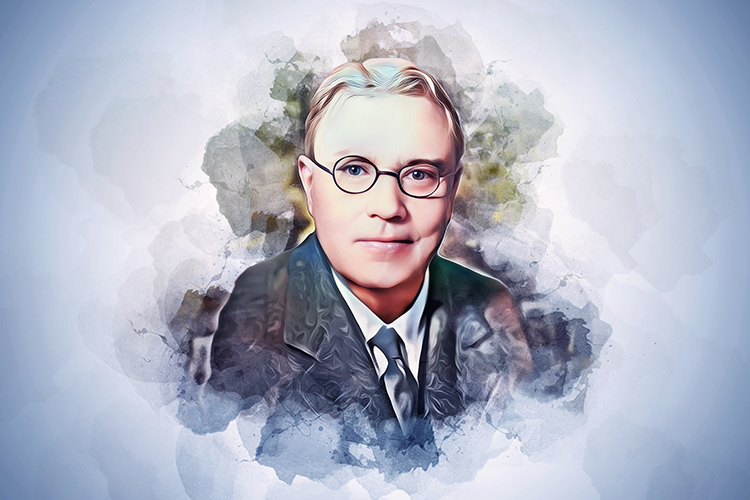 Hans Selye
Hans Selye (1963) studied the endocrine effects
of chronic stress, proposed the three-stage General Adaptation Syndrome, and popularized the term
stress in
The Stress of Life (1956).

Bell, Tarchanoff, and Bair pioneered the contemporary study of
self-regulation.
Alexander Graham Bell (1872) studied teaching the deaf
to speak using biofeedback.
He investigated Leon Scott's
phonautograph, which translated sound
vibrations into tracings on smoked glass to show their acoustic waveforms. Bell also examined Koenig's
manometric flame, which
displayed sounds as patterns of light.
Ivan Tarchanoff (1885) showed that voluntary control of heart rate could be
reasonably direct (cortical-autonomic) and did not depend on "cheating" by
altering breathing rate.
 J. H. Bair
J. H. Bair (1901) studied voluntary control of the
retrahens muscle that
wiggles the ear. He found that subjects learned this skill by inhibiting
interfering muscles. This was a solid demonstration of skeletal muscle
self-regulation.
Cybernetic Theory
Norbert Wiener (1948) developed
cybernetic theory that proposed that systems are
controlled by monitoring their results. Your home heating system is an excellent example of a cybernetic system. Cybernetic theory contributed
concepts like
system variable (what is controlled),
setpoint (goal),
feedback (corrective instructions), and
feedforward (instructions based on anticipated conditions).

At the landmark 1969 conference at the Surfrider Inn in Santa Monica, the participants coined the term
biofeedback from Weiner's feedback (Moss, 1998).
"This group needed a name, and the two candidates were biofeedback and autoregulation. Just before the
final vote, someone in the audience yelled out that autoregulation sounded like government control of cars. This
spontaneous comment created a tipping point, the consensus shifted to biofeedback, and the Biofeedback Research
Society (BRS) was born." (Peper & Shaffer, 2010, p. 142)
Operant Conditioning
Edward Thorndike (1911) advanced the term
instrumental learning to describe
voluntary responses that obtain a desired outcome. His law of effect
proposed that successful responses are mechanically stamped in by their
successful consequences.
B. F. Skinner's (1938)
operant conditioning research expanded on Thorndike's
law of effect. He argued that animals repeat responses followed by favorable consequences based on extensive laboratory findings.
Skinner introduced several concepts that have influenced biofeedback
theory.
Reinforcement is a process where the consequence of a voluntary
response increases the likelihood it will be repeated. Consequences that
strengthen responses are called
reinforcers.
Punishment is a process that
actively suppresses responses. A negative consequence such as a punishment following a voluntary response
decreases the likelihood that the response will be repeated. Consequences that
weaken responses are called
punishers.

Based on Skinner's work, researchers used operant theory to divide physiological responses into those that could
be voluntarily controlled and those that could not.
"From its inception, biofeedback had to overcome the entrenched paradigm that individuals could not
voluntarily control autonomic functions. Researchers who applied B. F. Skinner's work to biofeedback used
operant theory to determine which responses could be voluntarily controlled and which could not. For example,
Kimble (1961) argued that although subjects could learn to consciously control skeletal muscle responses,
autonomic processes (such as heart rate) were involuntary, could be only classically conditioned, and were
forever outside of conscious control. This perspective ignored the almost 3,000-year-old yogic practice of
autonomic control and research by Lisina (1958); Lapides, Sweet, and Lewis (1957); and Kimmel (1967) that
demonstrated voluntary control of autonomic responses." (Peper & Shaffer, 2010, p. 143)
The Evolution of EEG Research and Practice
1800s to 1940s
Early EEG equipment was imprecise and only minimally helpful in studying neuroanatomy and neurophysiology.
1960 to 1985
Environmental artifacts readily contaminated clinical EEG biofeedback devices. Excessive expectations and media hype over alpha training contributed to the perception that EEG biofeedback was not a viable modality. Biofeedback shifted to autonomic and skeletal muscle biofeedback. The minority of professionals who continued investigating and clinically using EEG biofeedback operated within an often unsupportive and hostile scientific environment.
2005-Present
The development of affordable, powerful digital computer technology, micro-electronics, more accurate sensors, and normative databases has enabled the average clinician to provide neurofeedback training. The increased portability and turn-key operation of EEG systems have enabled their use in both clinic and home environments.
Contributors To EEG Research
Luigi Galvani (1791) reported electrical currents in animals (Swartz & Goldensohn, 1998).
This finding
was confirmed
by
Giovanni Aldini (1794) and
Freiherr (baron) von Humboldt (1797).
Ernst Fleischl von Marxow (1833) recorded
visual cortical potentials (cortical potentials evoked by visual stimuli) but did not describe
rhythmic oscillation (Niedermeyer, 1993).
 Emil du Bois-Reymond
Emil du Bois-Reymond (1849) reported electrical conduction in muscles and peripheral
nerves (Niedermeyer & Schomer, 2011).
 Theodore Fritsch
Theodore Fritsch and
Julius Eduard Hitzig (1858) discovered that cortical stimulation elicits a localized
motor response (Niedermeyer & Schomer, 2011).
_AB.1.0435_Hitzig_CROPPED.tif.jpg) Richard Caton
Richard Caton (1875) was an English physician who discovered electrical potentials in vivisected animals. He recorded spontaneous electrical potentials from the exposed
cortical surface of monkeys and rabbits. He was the first to measure
evoked potentials (EPs), which are EEG responses to
stimuli (Niedermeyer & Schomer, 2011).

An evoked potential contributed by Albert Kok at Dutch Wikipedia, Public domain, via Wikimedia Commons.
He also reported the first observations of the shift of the
cortical gradient to electro-negative during activation.
Vasili Yakovlevic Danilewsky (1877) published
Investigations in the Physiology of the Brain,
which explored the relationship between the EEG and states of consciousness (Brazier, 1959).
 Adolf Beck
Adolf Beck (1891) published studies of spontaneous electrical potentials detected from the
brains of dogs and rabbits. He was the first to document
alpha blocking, where sensory stimulation blocks rhythmic
oscillations (Coenen et al., 1998).
 Sir Charles Sherrington
Sir Charles Sherrington (1906) introduced the terms
neuron and
synapse and published the
Integrative Action of the Nervous System. He made significant contributions to understanding muscle action, movement, proprioception, reflexes, and spinal nerves (Niedermeyer & Schomer, 2011).
Sherrington proposed the "enchanted loom" metaphor
for the human brain in a passage in the 1942
Man on His Nature, in which he poetically described the change in cortical activity as we awaken:
"The great topmost sheet of the mass, that where hardly a light had twinkled or moved, becomes now a sparkling field of rhythmic flashing points with trains of traveling sparks hurrying hither and thither. The brain is waking and with it the mind is returning. It is as if the Milky Way entered upon some cosmic dance. Swiftly the head mass becomes an enchanted loom where millions of flashing shuttles weave a dissolving pattern, always a meaningful pattern though never an abiding one; a shifting harmony of subpatterns." (p. 178)"
Current sleep research shows that the cortical networks are considerably more active during sleep than Sherrington imagined.
Vladimir Pravdich-Neminsky (1912) photographed dogs' EEG and event-related potentials, demonstrated a 12-14 Hz rhythm that slowed during asphyxiation, and introduced the term
electrocerebrogram (Niedermeyer & Schomer, 2011).
 Napolean Cybulsky and Jelenska-Maciesyna
Napolean Cybulsky and Jelenska-Maciesyna (1914) recorded experimental seizures (Swartz & Goldensohn, 1998).
Alexander Forbes (shown below) and David W. Mann (1920) reported replacing the string galvanometer
with a vacuum tube to amplify the EEG. The vacuum tube became the de facto standard by 1936 (Swartz & Goldensohn, 1998).
 Hans Berger
Hans Berger (1929) was an Austrian neurologist and psychiatrist who published the first human EEG recording. He published fourteen scientific papers from 1929 to 1938 (Niedermeyer & Schomer, 2011).
He described a pattern of oscillating electrical activity recorded from his son
Klaus' scalp (see published samples below).
Berger showed that
these potentials were not due to scalp muscle contractions. Berger discovered the alpha rhythm, the first EEG rhythm, and called it the Berger rhythm. He identified
sleep spindles, which are short bursts of 12-15 Hz activity during stage 2 sleep. Berger viewed the EEG as analogous to the ECG because it generates an electrical signal that can be amplified and displayed. He introduced the term
elektenkephalogram. He
believed that the EEG had diagnostic and therapeutic promise in measuring the impact of clinical interventions.
He demonstrated that alterations in state (sleep/wake, eyes open/closed, drug/no drug, and illness/health) are associated with changes in the EEG. He
associated the beta
rhythm with alertness. He described
interictal activity (EEG potentials between seizures) and recorded a
partial
complex seizure (impaired awareness and repetitive behaviors called automatisms) in 1933. Finally, he performed the first qEEG, which measures the signal strength of
component EEG frequencies (Hassett, 1978; Robbins, 2000;
Swartz & Goldensohn, 1998).
Edgar Douglas Adrian (shown below) and Bryan Matthews (1934) confirmed Berger's findings by recording their EEGs using a
cathode-ray oscilloscope. Their demonstration of EEG recording at the 1935 Physiological Society meetings in
England led to its widespread acceptance (Niedermeyer & Schomer, 2011)
Adrian provided evidence supporting the
all-or-none law: action potentials initiated at the axon hillock either occur or not. When they occur, they have the same amplitude and speed. He used himself as a subject and demonstrated the
phenomenon of
alpha blocking, where opening his eyes suppressed alpha rhythms.
 Matthews
Matthews (shown below) developed the oscillograph and differential amplifier, which is used in modern biofeedback and neurofeedback amplifiers
 M. H. Fisher and H. Lowenback
M. H. Fisher and H. Lowenback (1935) provided the first demonstration of
epileptiform spikes (sharp EEG transients with a duration of less than 70 ms) (Swartz & Goldensohn, 1998).
 Erna Gibbs, Fredric A. Gibbs, H. Davis, and William G. Lennox
Erna Gibbs, Fredric A. Gibbs, H. Davis, and William G. Lennox inaugurated clinical electroencephalography in 1935 by
identifying abnormal EEG rhythms associated with epilepsy, including interictal spike waves and 3-Hz activity in
absence seizures, which involve periods of less than 15 s during which a client blanks out (Brazier, 1959). Erna and Frederick Gibbs were married and closely collaborated on their research, including developing a scale for rating beta spindles.
Erna and Frederic Gibbs (top) and William Lennox (bottom) are pictured below.

 Frederic Bremer
Frederic Bremer (1935) used the EEG to show how sensory signals affect vigilance and studied the sleep-wake cycle. He divided the EEG into standard-bandwidth Bremer bands: delta (0-4 Hz), theta (4-8 Hz), alpha (8-12 Hz), and beta (12-32 Hz) (Niedermeyer & Schomer, 2011), but did not name them.
 Fredric A. Gibbs and Herbert H. Jasper
Fredric A. Gibbs and Herbert H. Jasper (1936) showed that the interictal spike was the defining indicator of epilepsy (Niedermeyer & Schomer, 2011).
W. G. Walter (1940s) named the
delta and
theta waves and the
contingent negative variation (CNV). This slow
cortical potential may reflect expectancy, motivation, intention to act, or attention (Niedermeyer & Schomer, 2011).
Walter (shown below) located an
occipital lobe source for alpha waves and demonstrated that delta waves could help find brain lesions like tumors.
In 1946, he described electrical responses to
photic stimulation (visual stimulation at a specific flash frequency).
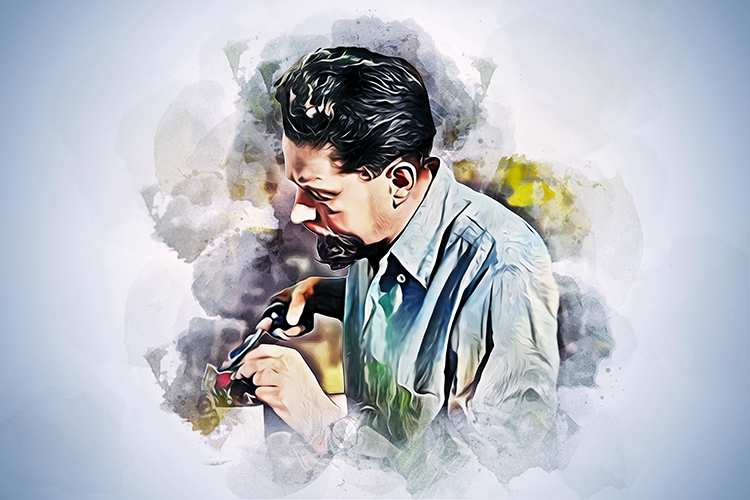
He improved Berger's electroencephalograph and pioneered EEG topography (Bladin, 2006).
EEG topography maps electrical activity across the brain surface.
The British EEG society was established in 1942, and the American EEG society began in 1947.
Nathaniel Kleitman (1953)
has been recognized as the "Father of American sleep research" for his seminal work in sleep-wake cycle regulation, circadian rhythms, the sleep patterns of different age groups, and the effects of sleep deprivation. Kleitman described the basic patterns of sleep cycles and connecting transitional states (Niedermeyer & Schomer, 2011).
He discovered the phenomenon of rapid
eye movement (REM) sleep with his graduate student Eugene Aserinsky. Below is a sample of brainwave activity during REM sleep contributed by MrSandman at English Wikipedia.
 William C. Dement
William C. Dement (1950s), another of Kleitman's students, described the EEG architecture and phenomenology of
sleep stages and the transitions between them in 1955, associated REM sleep with dreaming in 1957, and documented
sleep cycles in another species, cats, in 1958, which stimulated basic sleep research. He established the Stanford
University Sleep Research Center, the first international sleep laboratory, in 1970. He has contributed to research on sleep deprivation and the diagnosis and treatment of sleep disorders like apnea and narcolepsy (Niedermeyer & Schomer, 2011).
Kleitman and Dement advanced polysomnography by incorporating eye movement and the EEG during an entire night's sleep. These measurements enabled the study of sleep stages and behaviors like dreaming.
Per Andersen and S. A. Andersson (1968) proposed that thalamic pacemakers
project synchronous 7-Hz alpha rhythms to the cortex via thalamocortical circuits and discovered the phenomenon of long-term potentiation (LTP). Per Anderson is shown below.
Neurofeedback Research
Joseph Kamiya (1960s) is considered the "Father of Neurofeedback." He demonstrated that the alpha rhythm in humans could be operantly
conditioned. He published an influential article in
Psychology Today that
summarized research that showed that subjects could learn to discriminate
when alpha was present or absent and that they could use feedback to
shift the dominant alpha frequency by about 1 Hz. Almost half of his
subjects reported experiencing a pleasant "alpha state" characterized as
an "alert calmness." These reports may have contributed to the perception
of alpha biofeedback as a shortcut to a meditative state. He also studied EEG activity during meditative states. Kamiya's research demonstrated a clinical application alpha-theta neurofeedback.
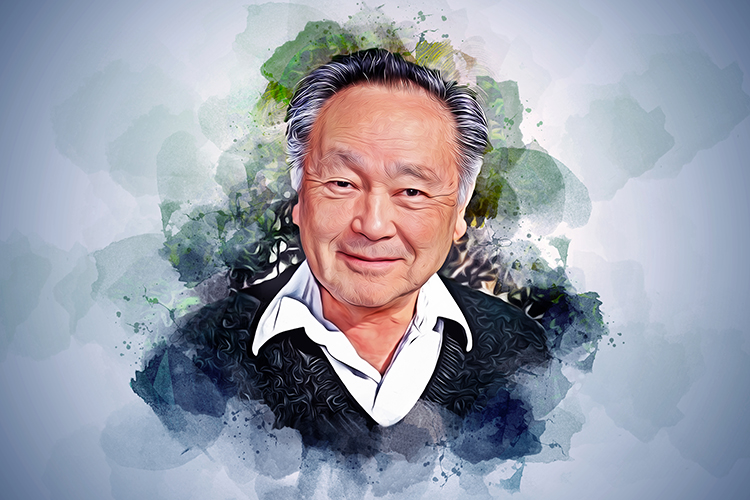 "Both the public and academic worlds recognize Joe Kamiya as the father of biofeedback. In 1966, while
monitoring subjects' EEGs in his sleep lab at the University of Chicago, he performed a novel experiment by
ringing a bell whenever an alpha burst occurred. He discovered that some subjects could discriminate when they
produced alpha activity. His 1968 publication of 'Conscious Control of Brain Waves' in Psychology Today
summarized research that showed that subjects could learn to discriminate when alpha was present or absent and
that they could use feedback to shift the dominant alpha frequency about 1 Hz. Almost half of his subjects
experienced a pleasant alpha state, which they characterized as an 'alert calmness.' Kamiya's article made
biofeedback accessible to the public and made it exciting because it suggested that individuals can learn to
control their own consciousness."
"Both the public and academic worlds recognize Joe Kamiya as the father of biofeedback. In 1966, while
monitoring subjects' EEGs in his sleep lab at the University of Chicago, he performed a novel experiment by
ringing a bell whenever an alpha burst occurred. He discovered that some subjects could discriminate when they
produced alpha activity. His 1968 publication of 'Conscious Control of Brain Waves' in Psychology Today
summarized research that showed that subjects could learn to discriminate when alpha was present or absent and
that they could use feedback to shift the dominant alpha frequency about 1 Hz. Almost half of his subjects
experienced a pleasant alpha state, which they characterized as an 'alert calmness.' Kamiya's article made
biofeedback accessible to the public and made it exciting because it suggested that individuals can learn to
control their own consciousness."
"Alpha biofeedback fit an emerging zeitgeist of self-exploration. American culture in the 1960s and 1970s
was shaped by a confluence of forces: exploration of consciousness through drugs such as LSD (Timothy Leary and
Richard Alpert) and Eastern meditative practices such as transcendental meditation (TM). Harvard physician
Herbert Benson repackaged TM as the relaxation response without an overt spiritual dimension. Kamiya's work
implied that a language of consciousness was possible and resulted in neurofeedback, one of the most promising
areas of biofeedback." (Peper & Shaffer, 2010, p. 143)
Barbara Brown (1970s) demonstrated the clinical use of alpha-theta
biofeedback. In research designed to identify the subjective states associated with EEG rhythms, she trained
subjects to increase the abundance of alpha, beta,
and theta activity using visual feedback. Brown recorded their subjective
experiences when the amplitude of these frequency bands increased. She also helped
popularize biofeedback by publishing a series of books, including
New
Mind, New body (1974),
Stress and the Art of Biofeedback (1977), and
Supermind
(1980). Brown was a co-founder and first President of the Biofeedback Research Society, which became the Biofeedback Society of America and then the Association for Applied Psychophysiology and Biofeedback.
 Thomas Mulholland and Erik Peper
Thomas Mulholland and Erik Peper (1971) showed that occipital alpha increases with
eyes open and not focused and is disrupted by visual focusing, a rediscovery of alpha blocking. Erik Peper is pictured below.
 Elmer Green and Alyce Green
Elmer Green and Alyce Green (1969, 1970, 1977) investigated the voluntary control of internal states by individuals like Swami Rama and American Indian medicine man Rolling Thunder in India and at the Menninger Foundation. They brought portable biofeedback equipment to India and monitored practitioners as they demonstrated self-regulation. A film containing footage from their investigations was
released as
Biofeedback: The Yoga of the West (1974).

The Greens showed that, like the yogis they studied, ordinary individuals could learn self-regulation of "involuntary" physiological functions like blood pressure, the EEG, heart rate, skeletal muscle activity, and skin temperature.
They developed alpha-theta training at the
Menninger Foundation from the 1960s to the 1990s. They hypothesized that
theta states allow access to unconscious memories and increase the
impact of prepared images or suggestions. Their alpha-theta research fostered Peniston's
development of an alpha-theta addiction protocol.
They pioneered temperature biofeedback training for Raynaud's, migraine, and hypertension and wrote the classic
Beyond Biofeedback (1977). They developed clinical biofeedback by applying these modalities to various disorders like hypertension and migraine.
Thomas Budzynski (1969, 1973) developed a twilight learning device that monitored left
hemisphere EEG while a patient sleeps and played recorded educational content like language lessons and
affirmations (positive statements) when theta was present. The premise of
twilight learning
is
that affirmations have a greater impact when presented in a transitional state in which theta waves replace the
alpha rhythm.

He studied the lateralization of
brain function across the two cerebral hemispheres and the use of neurofeedback and audio-visual stimulation (brain brightening) to
correct age-related cognitive decline.
M. Barry Sterman (1973) showed that cats and human subjects could be operantly
trained to
increase the amplitude of the sensorimotor rhythm (SMR) between 12-15 Hz recorded from the
sensorimotor cortex.
He demonstrated that SMR production protects cats against
drug-induced generalized seizures (tonic-clonic seizures involving loss of
consciousness) and reduces the frequency of seizures in humans diagnosed with epilepsy. He
found that his SMR protocol, which uses visual and auditory EEG
biofeedback, normalizes their EEGs (SMR increases while theta and beta
decrease toward normal values) even during sleep. Pediatric seizure activity © Medical-R/shutterstock.com.
Sterman conducted excellent research published in mainstream journals, which should have propelled SMR training into the forefront of seizure disorder treatment. Sterman also co-developed the Sterman-Kaiser (SKIL) qEEG
database.
Joel Lubar (1970s) studied SMR biofeedback to treat attention disorders and
epilepsy in collaboration with Sterman. He demonstrated that SMR training could improve attention and
academic performance in children diagnosed with Attention Deficit
Disorder with Hyperactivity (ADHD) at the University of Tennessee.
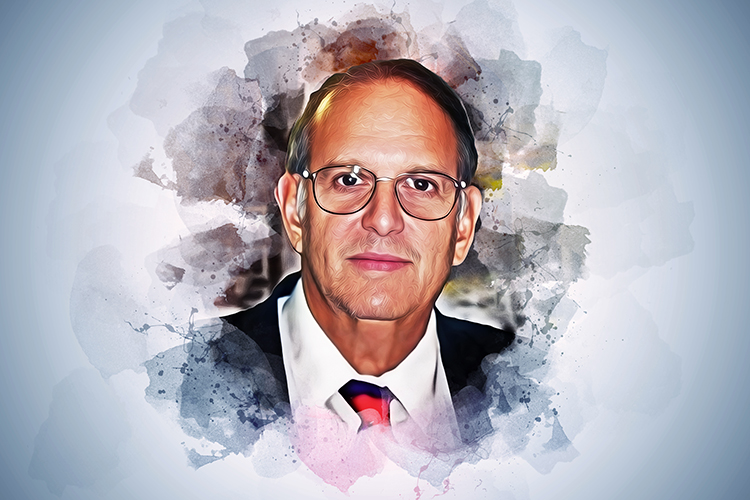
Lubar documented the importance of theta-to-beta ratios (the ratio of power in the theta and beta bands) in ADHD and developed
theta suppression-beta enhancement protocols to decrease these ratios and improve student performance.
Erwin Roy John and Frank H. Duffy (1970s) collaborated in developing quantitative electroencephalography (qEEG) and its use in the assessment of disorders. John created neurometrics in which clients are compared to a normative database. John contributed to the study of memory and proposed that memory is distributed across the brain. John and Duffy are shown below.

Jay Gunkelman's (Moss & Gunkelman, 2002) involvement in applied psychophysiology and biofeedback dates back to 1972 with the grant funding of the first state hospital-based biofeedback laboratory. Since the mid-1970s, he has specialized in the classical clinical EEG and is one of the world's most experienced EEG/qEEG specialists. He was instrumental in developing biofeedback and neurofeedback efficacy standards that have served as the foundation for the AAPB reference Evidence-Based Practice in Biofeedback and Neurofeedback. Jay has been one of the field's most influential educators and prolific authors.

Michael and Lynda Thompson (2015) have been "master teachers as well as superb clinicians and clinical researchers. Over the years, their clinic has acquired a much deserved international reputation with clients from other countries seeking their expertise. Somehow they also manage to teach workshops on biofeedback and neurofeedback to other professionals in the field." Thomas Budzynski, PhD.

They wrote The Neurofeedback Book: An Introduction to Basic Concepts in Applied Psychophysiology which has been the "bible" of neurofeedback didactic education. In 2016, AAPB awarded Michael and Lynda its Distinguished Scientist award.
Margaret Ayers (1975) was an early neurofeedback pioneer, established the first private clinical practice that exclusively provided neurofeedback, and published the first papers on neurofeedback for treating traumatic brain injury. She developed digital real-time EEG monitoring technology and investigated seizure control and treatment of coma patients with open head wounds. Her neurofeedback protocol down-trained slow-wave activity and uptrained 15-18 Hz activity.
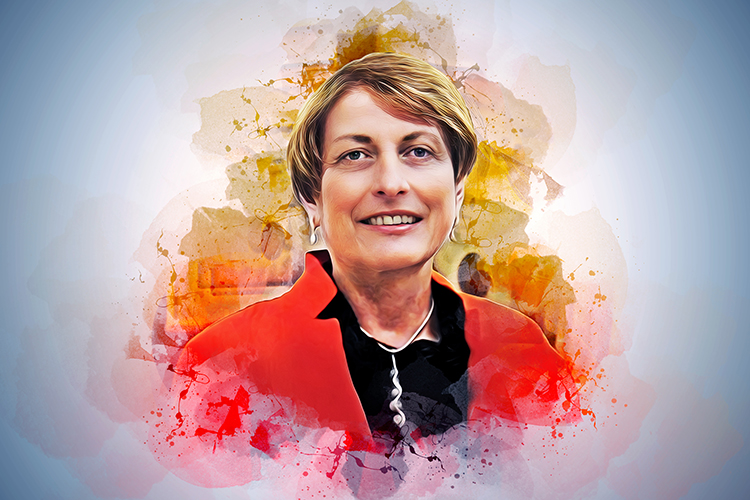
Niels Birbaumer and colleagues (1970s) have studied operant conditioning of slow cortical
potentials (SCPs; gradual changes in the membrane potentials of cortical dendrites that last from 300 ms to several seconds) since the late 1970s. They have demonstrated that subjects can
learn to control these DC potentials and have studied the efficacy of SCP biofeedback
in treating ADHD, epilepsy, and schizophrenia. They have shown that negative SCPs improve cognitive performance while positive SCPs increase the seizure threshold. Finally, they explored applications for brain-computer interfaces.

William N. Kuhlman and B. J. Kaplan (1979) identified the stabilizing 9-11-Hz mu rhythm in human subjects, which they considered separate from the SMR. They replicated Sterman's SMR research to inhibit generalized seizures.
Sue and Siegfried Othmer (1985) worked with Margaret Ayers to resolve their son's epilepsy. They proposed that protocols be chosen based on symptom patterns and pioneered computer games designed to modify the EEG. They investigated infra-low feedback (ILF) training of SCPs.
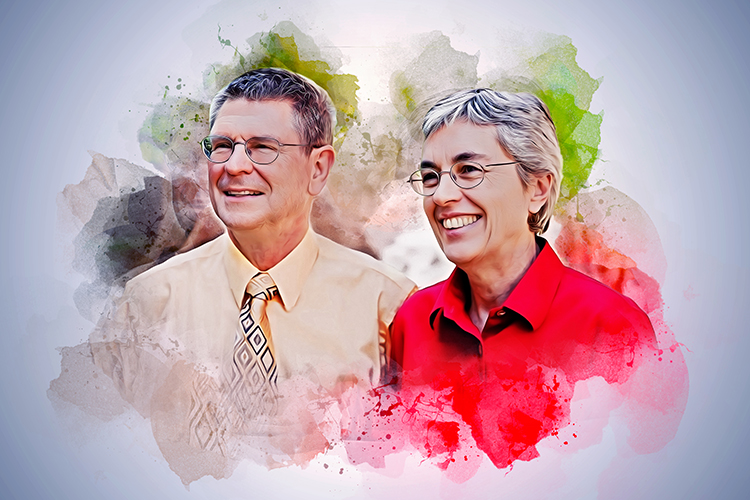
Eugene Peniston (1989) studied with the Greens at the Menninger Foundation. He developed the Peniston-Kulkosky Protocol, which uses alpha-theta training to treat alcoholism and post-traumatic stress disorder.
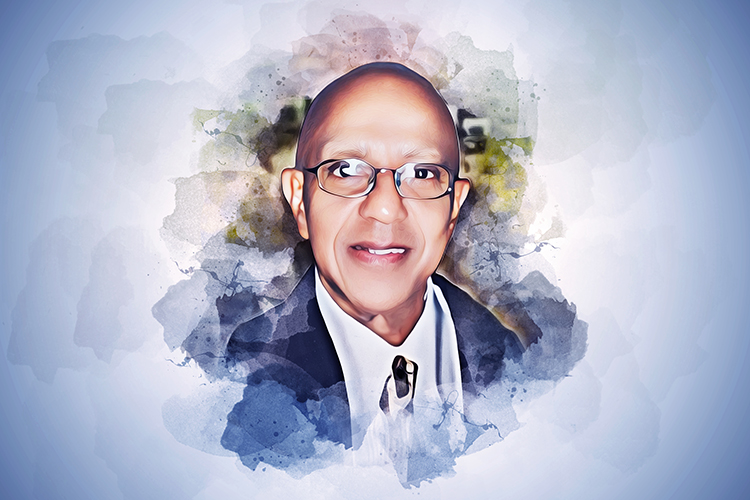
This multimodal protocol incorporated alpha-theta neurofeedback that uptrained alpha (8-13 Hz) and theta (4-8 Hz), autogenic training, constructed visualizations, diaphragmatic breathing, guided imagery, systematic desensitization, and temperature biofeedback. The diverse suggestion techniques utilized to potentiate alpha-theta training have influenced the use of guided imagery and behavior change scenarios in current alpha-theta neurofeedback.
Peniston and Kulkovsky reported that 8 of 10 experimental patients
who received their alpha-theta protocol for alcoholism maintained
abstinence from alcohol after 12-18 months compared with none of 10 controls. The two experimental patients who relapsed showed significantly reduced tolerance for alcohol.
Peniston published seminal articles concerning alpha-theta training.
Vincent Monastra published early qEEG studies concerning the theta/beta ratio in ADHD and neurofeedback treatment of ADHD. Along with Lubar and Linden, he developed the statistical basis for using theta/beta power ratio measurement as a marker for ADHD.
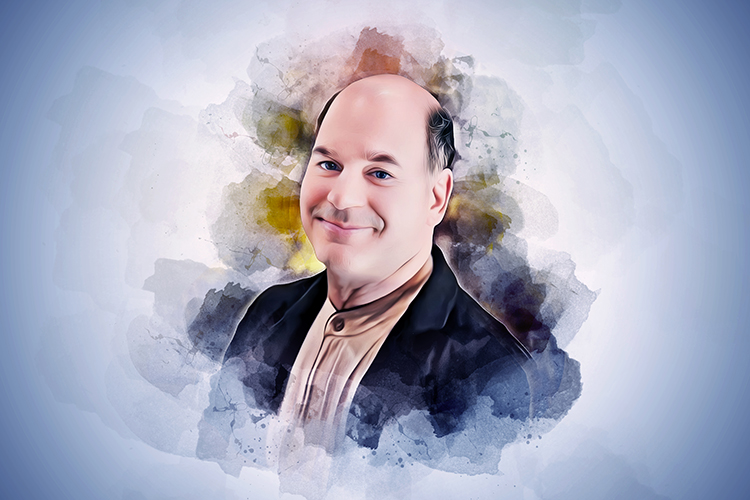
Robert Thatcher (2010) developed a quantitative EEG database known as the lifespan database (NeuroGuide). He published the Handbook of QEEG and EEG Biofeedback. He developed 2- and 4-channel z-score training, 19-channel surface and LORETA z-score NF training, and BrainSurfer.

Juri Kropotov, who holds doctoral degrees in theoretical physics, philosophy, and neurophysiology, studied event-related potentials, developed EEG amplifiers (Mitsar 201 and 202), and is a prolific author, including his 2009 book Quantitative EEG: Event-Related Potentials and Neurotherapy. He is affiliated with the Human Brain Institute (HBI) and developed WinEEG software, using the HBI normative database for EEG and ERP analysis. He received the USSR State Prize in 1985 and the Copernicus Prize by the Polish Neuropsychological Society in 2009.

Roberto Pasqual Marqui has contributed to functional brain mapping using EEG and magnetoencephalography, and the study of functional connectivity in brain networks. He developed the three-dimensional Low Resolution Electromagnetic Tomography (LORETA).
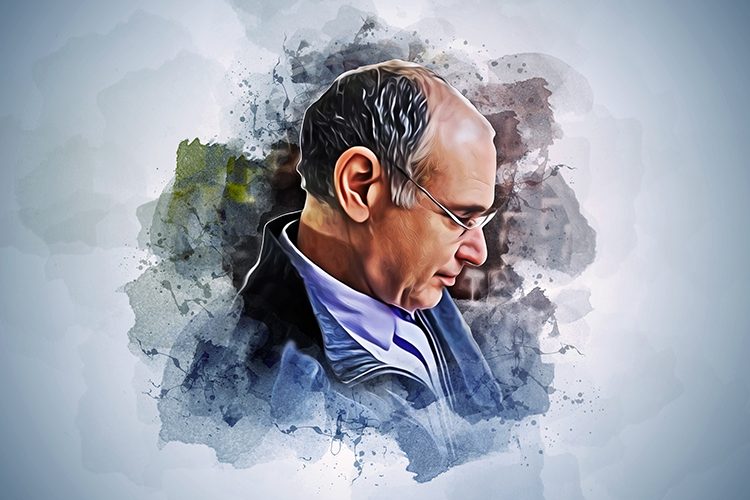
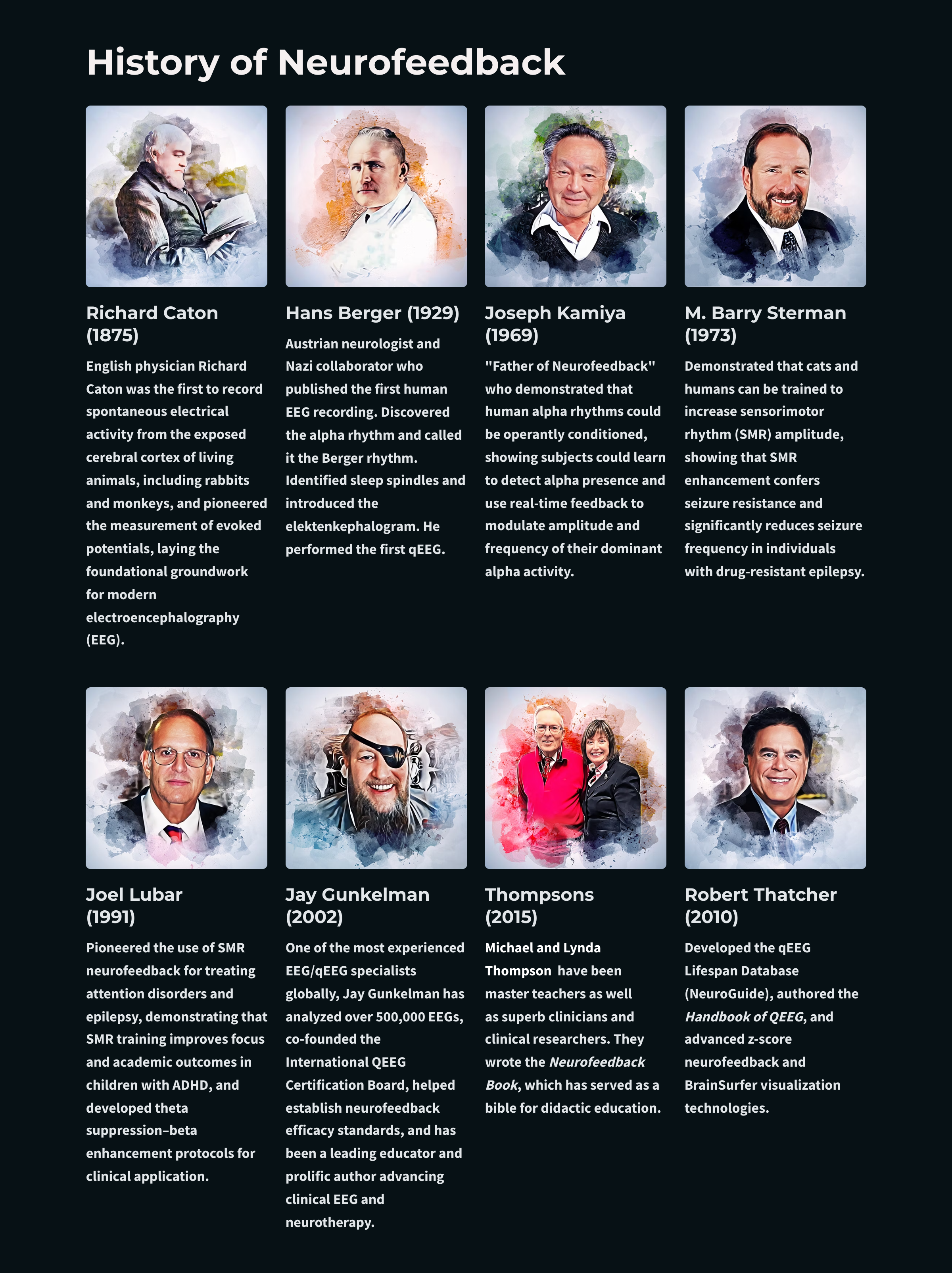
Glossary
absence seizure: a seizure usually lasting less than 15 s in which a client blanks out; also called petit mal seizures.
affirmations: positive statements like "Every day I am getting better in every way."
all-or-none law: action potentials either occur or not. When they occur, they have the same amplitude and speed.
alpha blocking:
replacement of the alpha rhythm by low-amplitude desynchronized beta activity during movement, attention, mental effort like complex problem-solving, and visual processing.
alpha rhythm: the first EEG rhythm discovered by Berger that ranges from 8 to 12 Hz which appears in three-quarters of adults when they are calm, awake, and not actively processing information.
alpha-theta training: training to progressively slow the EEG, increasing alpha and then theta abundance, developed by Brown and the Menninger Foundation and then adopted by Peniston and Kulkovsky in treating alcoholics.
beta rhythm: the second EEG rhythm discovered by Berger, 12-16 Hz.
biofeedback: information about psychophysiological performance obtained by noninvasive monitoring and used to help individuals ac
hieve
self-regulation through a learning
process that resembles motor skill learning.
complex partial seizure: a seizure in which awareness is impaired and repetitive behaviors called automatisms (e.g., lip smacking) may occur.
contingent negative variation (CNV): a steady, negative shift in potential (15 microvolts in young adults) detected at the vertex discovered by Walter. This slow cortical potential may reflect expectancy, motivation, intention to act, or attention. The CNV appears 200-400 ms after a warning signal (S1), peaks within 400-900 ms, and sharply declines after a second stimulus that requires the performance of a response (S2).
cortical gradient:
the difference in electrical charge between cortical neurons and scalp electrodes. When cortical networks are activated, their neurons are positively charged, and scalp electrodes are negatively charged.
curare: a paralytic drug used by Miller and DiCara to prevent rats from "cheating" by using skeletal muscles during operant conditioning of heart rate, blood
pressure, kidney blood flow, skin blood flow, and intestinal contraction.
cybernetic theory: Weiner proposed that living systems are
controlled by monitoring their results.
delta rhythm: EEG rhythm named by Walter that ranges from 0.5 to 3.5 Hz and is increased in adult Stage 3 sleep, brain injury, brain tumor, and developmental disability.
dysponesis: Whatmore and Kohli's concept of
misplaced effort. For example, bracing your shoulders when you hear a loud sound.
EEG topography:
the display that maps EEG activity across the brain surface in color.
evoked potentials: brain electrical potentials
that are elicited by sensory stimulation.
feedback: in cybernetic theory, orders to correct small errors to prevent larger future errors in a closed system.
feedforward: in cybernetic theory, orders to perform an action based on anticipated conditions in an open system.
generalized seizures: seizures characterized by a peculiar cry, loss of consciousness, falling, tonic-clonic convulsions of all extremities, incontinence, and amnesia for the episode. These were previously called grand mal seizures.
homeostasis: a steady internal state proposed by Bernard and Cannon.
instrumental learning: operant conditioning, an unconscious associative learning process that modifies the form and occurrence of voluntary behavior by manipulating its consequences.
interictal activity: EEG potentials between seizures.
manometric flame: a device developed by Koenig and studied by Alexander Graham Bell for teaching the deaf to speak that
displayed sounds as patterns of light.
motor
unit: alpha motor neuron and the skeletal muscle fibers it controls.
neuron: an excitable nervous system cell that processes and distributes information, chemically and electrically, and usually contains a soma (cell body), dendrites, and axon.
normative database: means and standard deviations for EEG variables such as amplitude, power, coherence, and phase that are calculated for single hertz bins, frequency bands, or band ratios based on the EEG data collected from healthy normal subjects who are grouped by age, eyes open or eyes closed conditions, and sometimes gender and task, which also allows for the specification of z-scores with a mean of 0 and standard deviation of 1 for the various combinations of EEG variables, frequency ranges, subject ages, eyes-open or eyes-closed conditions and other variables.
operant conditioning: an unconscious associative learning process that modifies the form and occurrence of an operant behavior (emitted behavior) by manipulating its consequences.
Peniston-Kulkovsky addiction protocol: a multimodal approach that incorporates visualization training, temperature biofeedback, rhythmic breathing techniques, autogenic training exercises, construction of personalized imagery, guided imagery, and 30 alpha-theta sessions.
phonautograph: a device developed by Leon Scott and studied by Alexander Graham Bell to teach the deaf to speak, translating sound vibrations into tracings on smoked glass to show their acoustic waveforms.
photic stimulation:
visual stimulation at a specific flash frequency.
punisher: a consequence that weakens an operant behavior. For example, shoulder pain (punisher) following excessive exercise (operant behavior) may reduce exercise intensity.
punishment: in operant conditioning, the consequence of an operant behavior reduces its probability.
quantitative EEG (qEEG): digitized statistical brain mapping using at least a 19-channel montage to measure EEG amplitude within specific frequency bins.
reinforcement: in operant conditioning, the consequence of an operant behavior increases its probability.
reinforcer: a consequence that strengthens an operant behavior. For example, weight loss (reinforcer) following daily walks (operant) may increase the probability of walking.
self-regulation: the control of your behavior (voluntary hand-warming).
sensorimotor rhythm (SMR): EEG rhythm that ranges from 12-15 Hz and appears when you inhibit movement and relax your muscles.
setpoint: the system goal, for example, a thermostat setting of 75 degrees F (23.9 degrees C).
sleep spindles: short bursts of 12-15 Hz activity during stage 2 sleep.
slow cortical potentials (SCPs):
gradual changes in the membrane potentials of cortical dendrites that last from 300 ms to several seconds. These potentials include the contingent negative variation (CNV), readiness potential, movement-related potentials (MRPs), and P300 and N400 potentials. SCPs modulate the firing rate of cortical pyramidal neurons by exciting or inhibiting their apical dendrites. They group the classical EEG rhythms using these synchronizing mechanisms.
spike:
a sharp EEG transient with a duration of less than 70 ms.
stress: Selye's concept of a nonspecific response to stimuli called stressors.
synapse: specialized chemical and electrical junctions across which neurons communicate with each other and non-neural cells.
system variable: the variable that is controlled. For example, room temperature is the system variable for a thermostat.
thalamus:
a forebrain structure above the hypothalamus that receives, filters, and distributes most sensory information. The thalamus contains neurons that can block or relay ascending sensory information. When these thalamic neurons rhythmically fire, this blocks the transmission of information to the cortex. When they depolarize in response to sensory information, this integrates and transmits this information to the cortex. Inputs to the thalamus determine whether these neurons block or relay sensory information.
theta rhythm: the EEG rhythm discovered by Walter that ranges from 4 to 7 Hz and is associated with drowsiness, the transition from wakefulness to sleep, rapid eye movement (REM) sleep, and the processing of information.
theta/beta training:
a protocol that decreases theta amplitude and increases beta amplitude.
theta-to-beta ratio: the ratio of power in the theta and beta bands.
twilight learning: Budzynski's training paradigm in which recorded material is played when theta activity replaces alpha activity.
visual cortical potentials:
brain electrical potentials evoked by visual stimuli like flashing lights.
z-score training: a strategy that attempts to normalize brain function with respect to mean values in a clinical database. EEG amplitudes that are 2 or more standard deviations above or below the database means are down-trained or uptrained to treat symptoms and improve performance.
TEST YOURSELF ON CLASSMARKER
Click on the ClassMarker logo below to take a 10-question exam over this entire unit.

REVIEW FLASHCARDS ON QUIZLET
Click on the Quizlet logo to review our chapter flashcards.

Visit the BioSource Software Website
BioSource Software offers
Physiological Psychology, which satisfies BCIA's Physiological Psychology requirement, and
Neurofeedback100, which provides extensive multiple-choice testing over the Biofeedback Blueprint.

Assignment
From your perspective, which EEG researcher contributed most to the development of neurofeedback? Why?
References
Adrian, E. D., & Mathews, B. H. C. (1934). The Berger rhythm. Brain, 57, 355-385. https://doi.org/10.1093/brain/57.4.35
Andersen, P., Andersson, S. A. (1968). Physiological basis of alpha rhythm. Appleton-Century-Crofts.
Andreassi, J. L. (2007). Psychophysiology: Human behavior and physiological
response (5th ed.). Lawrence Erlbaum and Associates, Inc.
Ayers, M. E. (1995). EEG neurofeedback to bring individuals out of level 2 coma [Abstract]. Biofeedback and Self-Regulation, 20(3), 304-305.
Ayers, M. E. (1995). Long-term follow-up of EEG neurofeedback with absence seizures. Biofeedback & Self-Regulation, 20(3), 309-310.
Berger, H. (1920). Ueber das elektroenkephalogramm des menschen. Archiv für Psychiatrie und
Nervenkrankheiten, 87, 527-570.
Bernard, C. (1957). An introduction to the study of experimental medicine. Dover. (Originally
published, 1865.)
Birbaumer, N., Elbert, T., Lutzenberger, W., Rockstroh, B., & Schwarz, J. (1981). EEG and slow cortical potentials in anticipation of mental tasks with different hemispheric involvement. Biol Psychol, 13, 251–260. https://doi.org/10.1016/0301-0511(81)90040-5
Bladin, P. F. (2006). W. Grey Walter, pioneer in the electroencephalogram, robotics, cybernetics, artificial intelligence. Journal of Clinical Neuroscience, 13(2), 170-177. https://doi.org/10.1016/j.jocn.2005.04.010
Bokser, I. O. (1999). History of creation of the doctrine, equipment and methods of formation of biological feedback. Med Tekh, 4,
44-46.
PMID: 10464764
Brazier, M. A. B. (1959). The EEG in epilepsy: A historical note. Epilepsia, 1(1-5), 328-336. https://doi.org/10.1111/j.1528-1157.1959.tb04270.x
Brazier, M.A.B. (1961). A history of the electrical activity of the brain. The first half-century. Pitman.
Bremer, F. (1935). Cerveau isole et physiologie du sommeil. Com Ren Soc Bio (Paris), 118, 1235-1241.
Brown, B. (1974). New mind, new body. Harper & Row.
Brown, B. (1977). Stress and the art of biofeedback. Harper &
Row.
Brown, B. (1980). Supermind: The ultimate energy. Harper &
Row.
Bruce, R. V. (1973). Bell: Alexander Graham Bell and the conquest of solitude. Gollancz.
Caton, R. (1875). The electric currents of the brain. British Medical Journal, 2, 278.
Coenen, A. M. L., Zajachkivsky, O., & Bilski, R. (1998). Scientific priority of A. Beck in the neurophysiology.
Experimental and Clinical Physiology and Biochemistry, 1, 105-109.
Cybusky, N., & Jelenska-Macieszyna, X (1914). Action currents of the cerebral cortex [in Polish]. Bull Acad Sci Cracov, B, 776–781.
Dement, W. (2000). The promise of Sleep: A pioneer in sleep medicine explores the vital connection between
health, happiness, and a good night’s sleep. Random House.
Evans, J. R., & Abarbanel, A. (1999). Introduction to quantitative EEG
and neurofeedback. Academic Press.
Fahrion, S., Norris, P., Green, A., Green, E., & Snarr, C. (1986). Biobehavioral treatment of essential hypertension: A group outcome study. Biofeedback-and-Self-Regulation, 11(4), 257-277.
Flor, H. (2002). Phantom-limb pain: characteristics, causes, and treatment. The Lancet, Neurology, 1(3),
182-189. https://doi.org/10.1016/S1474-4422(02)00074-1
Goldensohn, E. S., Porter, R. J., & Schwartzkroin, P.A. (1997). The American Epilepsy Society: An historic perspective on 50 years of advances in research. Epilepsia, 38(1), 124–150. https://doi.org/10.1111/j.1528-1157.1997.tb01088.x
Green, E. E., Walters, E. D., Green, A. M., & Murphy, G. (1969). Feedback technique for deep relaxation.
Psychophysiology, 6 (3), 371-377.
https://doi.org/10.1111/j.1469-8986.1969.tb02915.x
Green, E., & Green, A. (1977). Beyond biofeedback. Delacorte Press.
Green, E., Green, A. M., & Walters, E. D. (1970). Self-regulation of
internal states. In J. Rose (Ed.), Progress of cybernetics:
Proceedings of the First International Congress of Cybernetics,
London, September 1969 (pp. 1299-1318). Gordon and Breach
Science Publishers.
Green, E., Green, A. M., & Walters, E. D. (1970). Voluntary control of
internal states: Psychological and physiological. Journal of
Transpersonal Psychology, 2, 1-26.
Kamiya, J. (1969). Operant control of
the EEG alpha rhythm. In C. Tart (Ed.), Altered states of
consciousness. Wiley.
Kleitman, N. (1960). Patterns of dreaming. Scientific American, 203(5), 82-88. https://doi.org/10.1038/scientificamerican1160-82
Lubar, J. F. (1989). Electroencephalographic biofeedback and
neurological applications. In J. V. Basmajian (Ed.), Biofeedback:
Principles and practice for clinicians (3rd ed.), pp. 67-90.
Williams and Wilkins.
Lubar, J. F. (1991). Discourse on the development of EEG diagnostics and
biofeedback treatment for attention-deficit/hyperactivity disorders.
Biofeedback and Self-regulation, 16, 201-225. https://doi.org/10.1007/bf01000016
Lubar, J. F., & Shouse, M. N. (1977). Use of biofeedback in the
treatment of seizure disorders and hyperactivity. In B. B. Lahey & A. E.
Kazdin (Eds.), Advances in clinical child psychology (pp.
203-265). NY: Plenum Press.
McKnight, J. T., & Fehmi, L. G. (2001). Attention and neurofeedback
synchrony training: Clinical results and their significance. Journal
of Neurotherapy, 5. https://doi.org/10.1300/J184v05n01_05
Miller, N. E. (1969). Learning of visceral and glandular responses.
Science, 163, 434-445. https://doi.org/10.1126/science.163.3866.434
Miller, N. E. (1978). Biofeedback and visceral learning. Annual
review of psychology, 29, 373-404. https://doi.org/10.1146/annurev.ps.29.020178.002105
Miller, N. E., & DiCara, L. (1967). Instrumental learning of heart rate changes in curarized rats: Shaping and specificity to discriminative stimulus. Journal of Comparative and Physiological Psychology,
63, 12-19. https://psycnet.apa.org/doi/10.1037/h0024160
Miller, N. E., & Dworkin, B. (1974). Visceral learning: Recent
difficulties with curarized rats and significant problems for human
research. In P. A. Obrist; A. H. Black, J. Brener, & L. V. DiCara (Eds.),
Cardiovascular psychophysiology (pp. 312-331). Aldine.
Moss, D., & Gunkelman, J. (2002). Task force report on methodology and empirically supported treatments: Introduction and summary. Applied Psychophysiology and Biofeedback, 27 (4), 261-262. https://doi.org/10.1023/a:1021009301517
Mulholland, T., & Peper, E. (1971). Occipital alpha and accommodative vergence, pursuit tracking, and fast eye movements. Psychophysiology, 8, 556-575. https://doi.org/10.1111/j.1469-8986.1971.tb00491.x
Niedermeyer, R., & Schomer, D. L. (2011). Historical aspects of EEG. In D. L. Schomer & F. Lopes da Silva (Eds.). Niedermeyer's Electroencephalography: Basic principles, clinical applications, and related fields (6th ed.). Lipincott Williams & Wilkins.
O’Leary, J. L., & Goldring, S. (1976). Science and epilepsy. Raven Press.
Peper, E., & Shaffer, F. (2010). Biofeedback history: An alternative view. Biofeedback, 38(4),
142-147.
https://doi.org/10.5298/1081-5937-38.4.03
Pravdich-Neminsky, V. V. (1913). Ein versuch der registrierung der elektrischen gehirnerscheinungen. Zbl Physiol
27, 951–960.
Robbins, J. (2000). A symphony in the brain. Atlantic Monthly Press.
Sherrington, C. S. (1906). The integrative action of the nervous system. Yale University
Press.
Sherrington, C.S. (1942). Man on his nature. Cambridge University Press.
Skinner, B. F. (1938). The behavior of organisms: An experimental analysis. Appleton-Century.
Sterman, M. B. (1973). Neurophysiologic and clinical studies of sensorimotor EEG biofeedback training: Some effects on epilepsy. Seminars in Psychiatry, 5, 507-524.
Swartz, B. E., & Goldensohn, E. S. (1998). Appendix: Time of the history of EEG and associated fields. Electroencephalography and Clinical Neurophysiology, 106, 173-176. PMID: 9741779
Thompson, M., & Thompson, L. (2016). The neurofeedback book: An introduction to basic concepts in applied
psychophysiology (2nd ed.). The Association for Applied Psychophysiology and Biofeedback.
Thorndike, E. (1911). Animal intelligence: Experimental studies. The Macmillan Company.
Walter, W. G. (1937). Electroencephalogram in cases of cerebral tumour. Proceedings of the Royal Society of
Medicine, 30, 579-578. PMID: 19991061
Walter, W. G. (1953). The living brain. Norton.
Walter, W. G., Cooper, R., Aldridge, V. J., McCallum, W. C., & Winter, A. L. (1964). Contingent negative variation: An electric sign of sensorimotor association and expectancy in the human brain. Nature, 203,
380-384. https://doi.org/10.1038/203380a0
Wiener, N. (1948). Cybernetics: Or control and communication in the animal and the machine.
MIT Press.





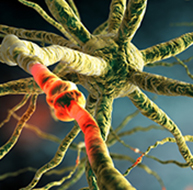











_AB.1.0435_Hitzig_CROPPED.tif.jpg)










































